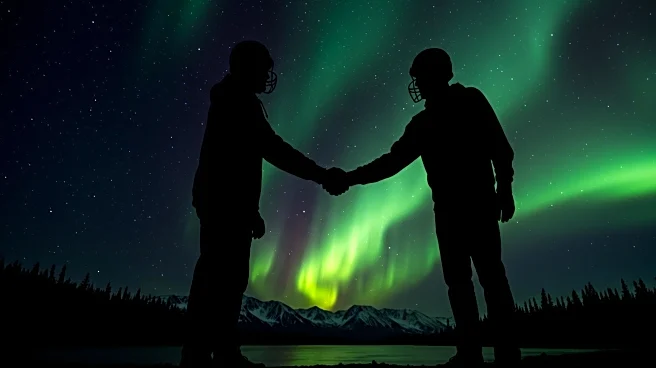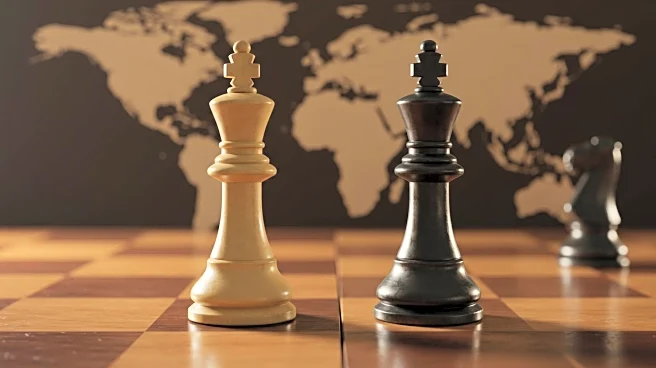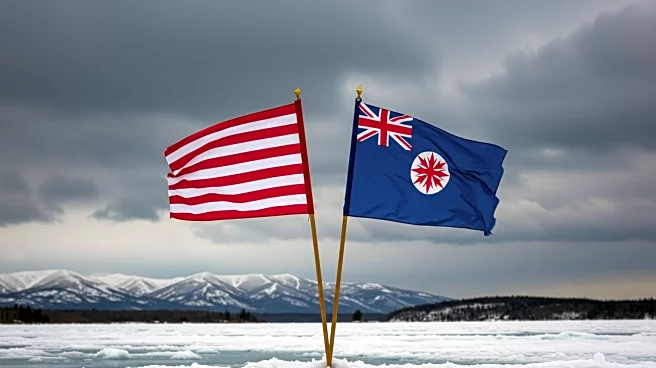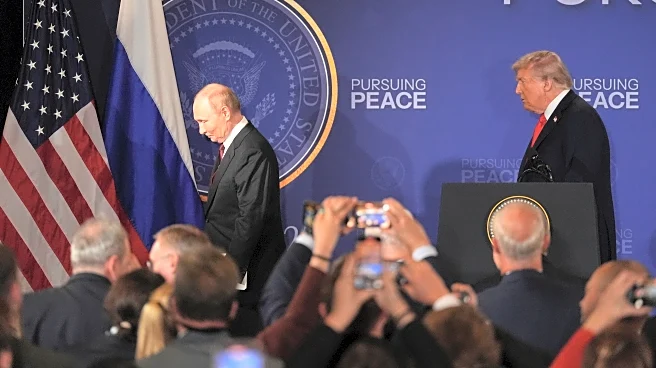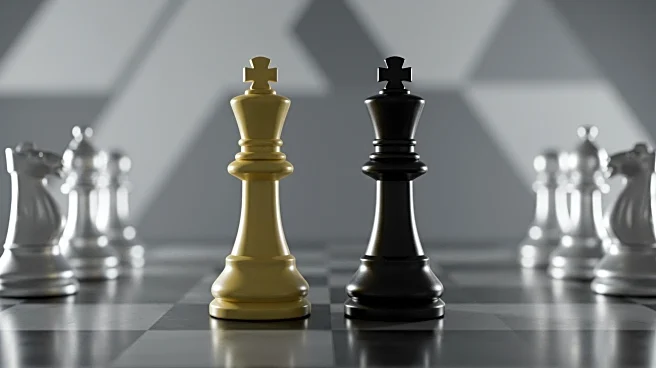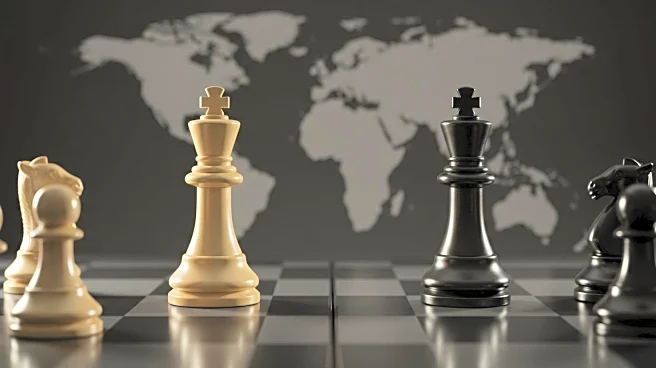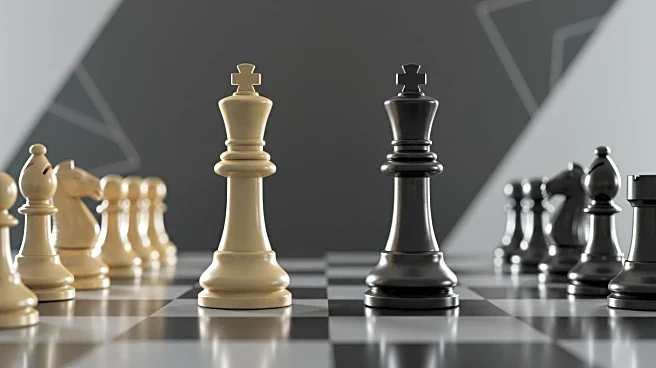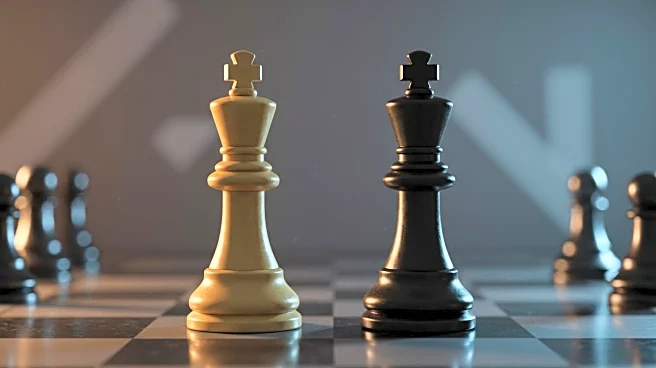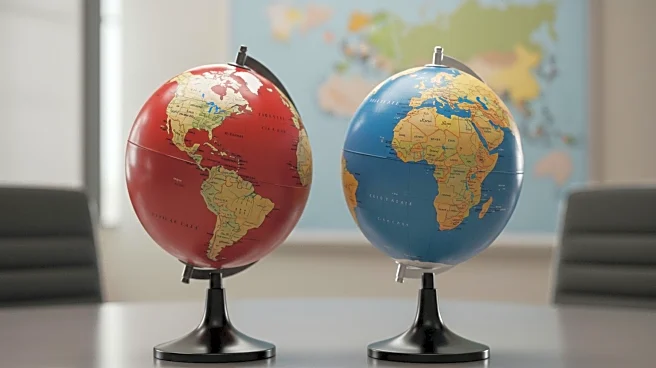What's Happening?
During a summit in Anchorage, Alaska, President Trump and Russian leader Vladimir Putin engaged in a handshake that was analyzed by body language experts as a symbolic power struggle. Initially, Trump appeared positive and confident, clapping for Putin as he approached. However, during the handshake, Trump pulled Putin's arm close to his body, a gesture interpreted as asserting dominance. Putin reciprocated by patting Trump on the shoulder, indicating a subtle power battle. Despite the handshake dynamics, the leaders appeared friendly, walking side-by-side after the exchange. The summit, aimed at discussing Moscow's war on Ukraine, ended without a resolution, leaving Trump visibly exhausted.
Why It's Important?
The handshake between President Trump and Putin is significant as it reflects the complex diplomatic relationship between the U.S. and Russia. The body language during their interaction suggests underlying tensions and power dynamics, which are crucial in international relations. The summit's failure to produce a resolution on the Ukraine conflict highlights ongoing geopolitical challenges. The interaction may influence public perception of the leaders and their ability to negotiate effectively, impacting future diplomatic engagements and policy decisions.
What's Next?
Following the summit, the lack of progress on the Ukraine issue may lead to increased diplomatic efforts or alternative strategies by the U.S. and its allies. Observers will likely scrutinize future interactions between Trump and Putin for signs of shifting power dynamics. The international community may pressure both leaders to resume talks and seek a peaceful resolution to the conflict. Additionally, domestic reactions in the U.S. could influence Trump's approach to foreign policy and his administration's handling of Russian relations.
